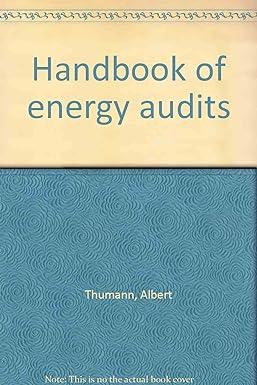Question
3.) Discretionary benefits expanded greatly during the late 1940s and early 1950s because of A) Increased industrialization B) Federal restrictions on wages C) Greater unionization
3.) Discretionary benefits expanded greatly during the late 1940s and early 1950s because of
A) Increased industrialization
B) Federal restrictions on wages
C) Greater unionization of the labor force
D) State legislation
5.) What are the three fundamental roles played by employee benefits?
A) Protection programs, paid time-off, retirement programs
B) Accommodation and enhancement benefits, protection programs, paid time-off
C) Statutory benefits, extrinsic rewards, intrinsic rewards
D) Accommodation and enhancement benefits, protection programs, retirement programs
6.) If a company changed its paid time off benefits after learning that employees were using most of their sick days for personal business, then the company would be using which approach to strategic benefits planning?
A) Bottom up
B) Top down
C) Backing in
D) Strategic synergy
12.)Which of the following is NOT one of the common methods for allocating funds from a profit sharing pool?
A) Equal payments to all employees
B) Proportional payments based on annual salary
C) Proportional payments based on the employee's contribution to making the profit
D) Proportional payments based on management position/level
13.) Nondiscrimination rules for qualified pension plans say that employers cant discriminate
A) Against female employees in terms of its plan's contributions and benefits
B) Against racial minority employees in term of its plan's contributions and benefits
C) In favor of its staff over its line employees in terms of its plan's contributions and benefits
D) In favor of highly compensated employees in terms of its plan's contributions and benefits
17. True or False A deceased workers family is eligible for Social Security survivor benefits roughly equal to 71.5% to 75% of the deceased workers PIA.
18. True or False. Medigap insurance supplements Medicare Part A and Part B, and it is offered through the Social Security Administration.
23.) Which one of the following is FALSE about Family and Medical Leave?
A) An employee of a covered employer who works at least 1,250 hours in the previous 12 months is eligible for FMLA leave
B) FMLA applies to employers with 50 or more workers within 75 miles
C) If spouses work for the same employer, they are both allowed to take 12 weeks of leave for the birth of a child (total of 24 weeks of leave)
D) Group health insurance must be maintained during an FMLA leave whenever the insurance was provided before the leave was taken
24. Which one of the following is NOT part of the Family and Medical Leave Act?
A) Eligible employees can take time off for family medical emergencies
B) Employees must be restored to their original or equivalent position
C) The employees pay continues for the first 30 days of the leave
D) Relatives of seriously injured members of the military may take up to 26 weeks off to care for their injured military family members
32. A significant change to a benefit plan must be described and distributed to employees in a:
E) Summary plan description
F) Summary annual report
G) Summary of material modification
H) Summary of plan changes
34. Executive retirement plans are nonqualified deferred compensation plans under ERISA because they:
E) Violate ERISAs nondiscrimination rules, give benefit amounts that are substantially more than the maximum annual limit set by the IRS, and violate the ADEAs mandatory retirement age requirements
F) Violate ERISAs nondiscrimination rules, violate the ADEAs mandatory retirement age requirements, and violate ERISA's coverage requirements
G) Give benefit amounts that are substantially more than the maximum annual limit set by the IRS, violate ERISA's coverage requirements, and violate ERISAs nondiscrimination rules
H) Require ten-year vesting, violate ERISAs nondiscrimination rules, and permit contribution amounts that are substantially more than the maximum annual limit set by the IRS
35. Of these four funding mechanisms, the most secure method for an executive participating in a nonqualified deferred compensation plan is
A) General assets
B) Corporation-owned life insurance
C) Split-dollar life insurance
D) Employee-owned annuities
36. The two objectives of nonqualified executive deferred compensation plans are
A) Excise tax benefits and supplemental executive pensions
B) Excessive benefits and overcoming IRS limits on ERISA qualified retirement plans
C) Restoration and stock ownership
D) Excess benefit plans (restoration) and supplemental executive retirement plans (SERPs)
Step by Step Solution
There are 3 Steps involved in it
Step: 1

Get Instant Access to Expert-Tailored Solutions
See step-by-step solutions with expert insights and AI powered tools for academic success
Step: 2

Step: 3

Ace Your Homework with AI
Get the answers you need in no time with our AI-driven, step-by-step assistance
Get Started


